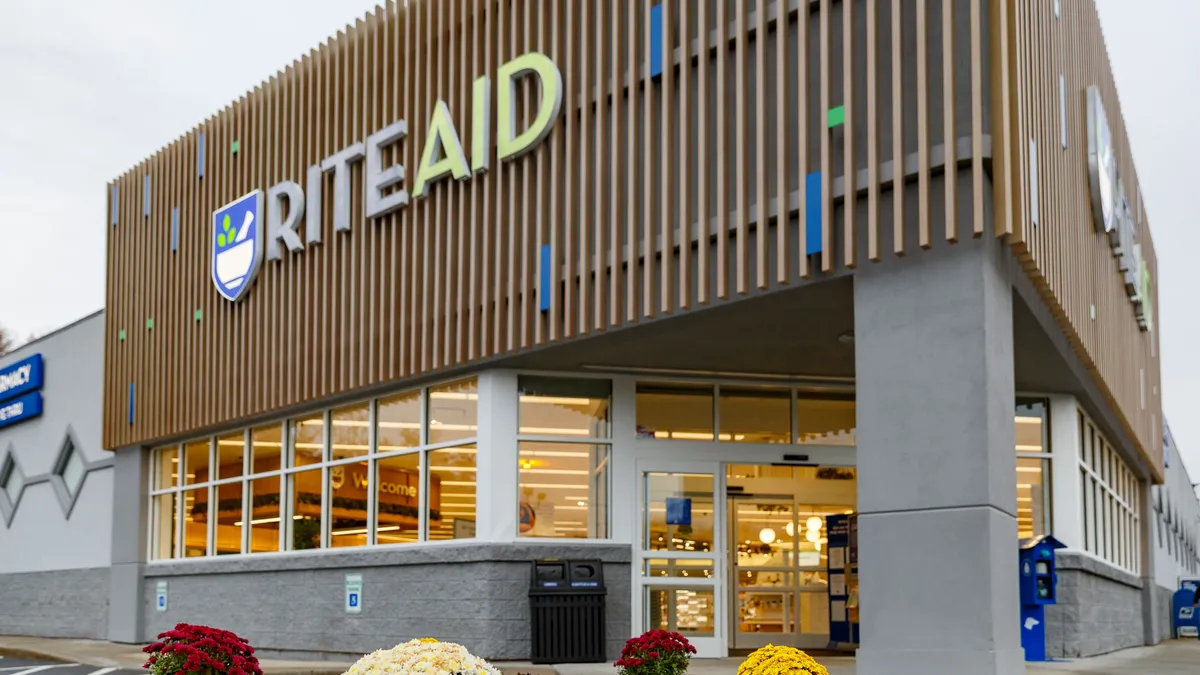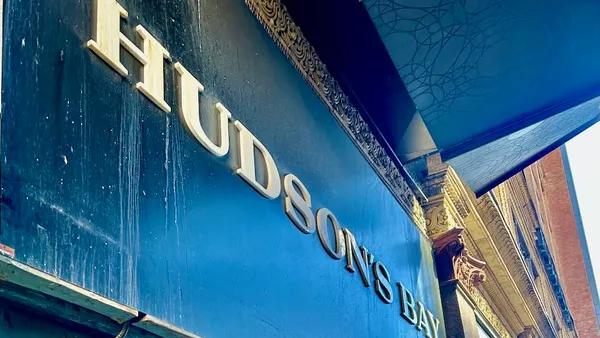Dive Brief:
- Rite Aid’s top-line sales fell by more than 3% to $5.9 billion in the company’s second quarter.
- Front-end comp sales fell by 0.3% due mostly to declines in tobacco sales. Excluding tobacco, front-end retail sales rose slightly, by 0.2%, according to a release.
- The company's net loss grew by more than three times to $331.3 million, driven by a goodwill impairment of $252.2 million in Rite Aid’s pharmacy services segment as well as impairment charges related to the company’s previously announced store closures and other costs.
Dive Insight:
Rite Aid CEO Heyward Donigan said in prepared remarks that the company has “made good progress on key initiatives during the quarter” including growth in prescriptions (up 5.3% on a comparable basis) and market share. But Donigan also pointed to supply chain challenges and pressures on consumer spending.
Much of the fall in the company’s pharmacy sales came from an expected decline in revenue from COVID-19 vaccine and testing, as well as closed stores.
In the front-end of Rite Aid’s stores, Donigan said the company saw “good results in seasonal, health, and consumable categories, offset by underperformance in prior year's very strong alcohol results, overall general merchandise, beauty and personal care” yet noted that “we expect to see a cautious consumer in the back half of the year.”
Donigan also pointed to shrink in the retailer’s urban New York stores as well as protracted supply chain and out-of-stock issues in over-the-counter and private label products.
Neil Saunders, managing director of GlobalData, described Rite Aid’s “very modest pace” of front-end sales growth as “a little concerning given the efforts Rite Aid has put into improving its offer.” Some of that could be a decline in foot traffic as consumers pull back on pandemic-related services like testing.
The imperative of becoming a convenient destination for the necessary and impulse purchases of Rite Aid’s rural customer base could be “undermined by the expansion of dollar stores and fast e-commerce deliveries, both of [which] have given rural consumers easier access to products,” Saunders said in emailed comments. Growing price sensitivity also poses a problem for the retailer, he added.
The retailer, long under strain financially as it has tried to compete with the sector’s giants, has tried to ease the bottom line through recent store closures. Chief Financial Officer Matt Schroeder told analysts that “I would argue that closing these unprofitable stores is improving earnings quality a great deal because we have wound our way through about 150 stores in the fleet that just were a drag on EBITDA.”
The closure of those stores is benefitting the company’s EBITDA to the tune of $60 million this year, according to Schroeder.
And the company needs all the profit it can get. Analysts with Deutsche Bank, in a note from the spring, estimated that Rite Aid needs $400 million to $450 million in annual adjusted EBITDA just to keep operating while paying its debt obligations. After lowering its guidance for the year, Rite Aid now projects between $450 million and $490 million for the current fiscal year.













